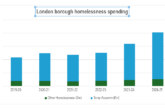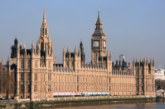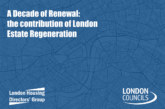
London Councils responds to a report from the Institute for Fiscal Studies (IFS) on levels of public spending in areas across England.
The IFS report, ‘How much public funding does each area receive?’ looks at the funding for five key public services in each local authority area in England in 2022-2023 — the NHS, primary and secondary schools, local government, the police and public health services.
Key findings in the report include that funding for ‘delivering these services in specific places averaged £4,310 per capita across England, but this varied widely — from an estimated £3,642 in York, to £5,648 in Blackpool. Funding per capita was highest in inner London boroughs and relatively deprived, urban areas in the North, including parts of Greater Manchester, Liverpool and Teesside. It was typically below average across much of the South of England and was £271 below average in the South East’.
The report also found that: ‘Overall, the most-deprived fifth of areas receive a share of funding that is 3% lower than their share of estimated needs, and the least-deprived fifth of areas 3% more. This pattern is driven almost entirely by local government, where the gaps are much starker (−9% and +15%)’.
Cllr Claire Holland, London Councils’ Executive Member for Communities said: “We welcome this authoritative and impartial research by the IFS. Unfortunately, it suggests London local government funding is 17% lower than its estimated relative need — the largest gap of any region in England.
“London has some of the worst deprivation in the country. As the 2021 census showed, over the last decade outer London in particular has become more deprived, reflecting demographic and economic changes. Since funding was last updated, London’s total population has grown by almost 800,000 — broadly equivalent to a city the size of Leeds.
“But, as the report highlights, local government funding has not changed to reflect these fast-rising pressures and growing levels of need.
“With funding levels still almost a fifth below where they were in 2010, local government funding reform must take place alongside vital investment across the entire sector to put council finances back on a sustainable path for the long term.
“We remain committed to working with the government to ensuring this happens.”









